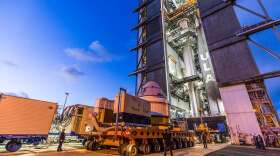Starliner's options
Engineers continue to investigate issues on Boeing’s Starliner capsule as NASA weighs it options in bringing the crew home.
Astronauts Butch Wilmore and Suni Williams launched to the International Space Station in Starliner back in June, but issues with the spacecraft’s propulsion system put their ride home in limbo.
Don Platt, the director of Florida Tech’s Spaceport Education Center in Titusville and an associate professor of space systems, explained that Boeing is currently trying to figure out what went wrong with Starliner and to see if there is still a chance to use the thrusters.
"There's probably very little they can do to fix them at this point," Platt said. "What they can do is they can look at what thrusters are working properly, and how can we then use those thrusters to efficiently get the vehicle back into the atmosphere and then to the surface of the Earth."
While Starliner has been having extensive issues and now Boeing has some tough decisions to make about what's next, Platt said we need to remember that this was a test mission.
"I think that we've had a lot of success in space over the last decade or so, and we've probably gotten used to things going perfectly," Platt said. "Although space is not that easy, and we can see problems, problems do pop up from time to time. Even back in the days of the shuttle program, there used to be issues with the orbiter, even on orbit, and they'd have to think about, 'can we keep flying this mission, or do we need to return to the Earth?'"
Insect buddies on the ISS
The ISS has some insect buddies on board – robotic bees. The Astrobees have learned over 100 activities and logged over 1,000 hours of work aboard the ISS. Currently, there are three bots on the space station: Honey, Bumble and Queen.

From assisting astronauts to working on various research projects, the robots are very busy bees. The lead project engineer, Andres Mora Vargas, said the Astrobees have been essential and act as a research platform.
"Some people use it to test materials," Mora Vargas said. "Some people use it to demonstrate capabilities, like on-orbit servicing. There's a wealth of different experiments that people can do. In a nutshell, they are robots that help other people access the International Space Station in a way that it is unique."
Mora Vargas said working with the robots is a phenomenal experience. He said he is hopeful for the future and to see where these bees end up.
"You never get to do the same thing twice," Mora Vargas said. "What we are really constant at is the fact that we are always pushing what is possible in terms of automation and robotics in general, especially in these very dynamic, very extreme environments, like those in space."








